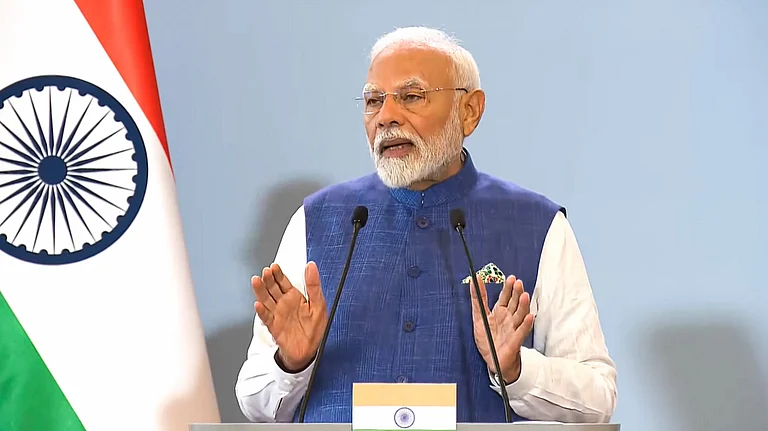In its latest monetary policy announcement, the Reserve Bank of India (RBI) decided to maintain the repo rate at 5.5%, reflecting a balanced and steady approach to managing growth and inflation. The move, while largely anticipated, comes at a crucial juncture, just ahead of the festive season and amid global macroeconomic uncertainty, offering a sense of stability and reassurance to India’s real estate sector.
Industry experts widely view this decision as one that reinforces confidence, sustains affordability, and provides a predictable environment for developers and homebuyers alike.
A Measured Approach to Support Growth
Anshuman Magazine, Chairman & CEO, CBRE India, South-East Asia, Middle East & Africa, describes the RBI’s stance as a measured approach ahead of the festive season and amidst volatile global conditions. He notes that the decision, combined with range-bound inflation and recent GST cuts, is likely to lift consumer sentiment and encourage greater demand across key sectors. “For real estate,” he says, “It signals steady growth and reinforces market confidence, offering long-term predictability to developers and homebuyers.”
Echoing this sentiment, Shishir Baijal, CMD, Knight Frank India, calls it a calibrated approach amidst a complex economic backdrop, pointing out that while inflation has moderated, it remains uneven. “The continuation of stable policy rates and surplus liquidity helps preserve affordability for homebuyers, particularly as some banks have already lowered home loan rates. This policy continuity, coupled with easing credit conditions and steady economic growth, can provide a boost to affordable housing,” he elaborates.
“The decision, combined with range-bound inflation and recent GST cuts, is likely to lift consumer sentiment and encourage greater demand across key sectors.”Anshuman Magazine, Chairman & CEO, CBRE India, South-East Asia, Middle East & Africa
Predictability and Confidence for Developers
For developers, the biggest takeaway from this decision is stability. Anshul Jain, Chief Executive – India, SEA & APAC Office and Retail at Cushman & Wakefield, says that while the repo rate remains unchanged, the central bank’s focus on better transmission is expected to ease borrowing rates further, improving lending to REITs and real estate projects. He further adds, “Predictable borrowing costs will help developers plan capital-intensive projects and drive investment across real estate and infrastructure.”
Similarly, Pradeep Aggarwal, Founder & Chairman of Signature Global (India) Ltd., states, “Maintaining the rate brings stability and continuity to India’s financial ecosystem and is likely to sustain positive momentum across sectors, including real estate.” With the festive quarter beginning on a strong note and GST reforms further boosting sentiment, he expects steady demand across segments and a balanced growth trajectory benefiting developers, buyers, and allied sectors alike.
Homebuyer Confidence and Festive Optimism
For homebuyers, steady rates translate to predictable EMIs and stable borrowing costs, a crucial factor during the festive season when purchase decisions typically rise. Dr. Niranjan Hiranandani, Chairman, NAREDCO, shares, “The RBI’s decision ensures stability, keeping EMIs and interest burdens unchanged, while maintaining confidence among homebuyers. He further adds, “This environment, combined with festive offers and sustained housing demand, creates an ideal time for potential homebuyers to act on their aspirations.”
Sukhraj Nahar, President of CREDAI-MCHI, adds that the RBI’s move supports economic recovery while safeguarding financial stability. He highlights that stability in lending rates ensures predictable EMIs, especially important for homebuyers in the Mumbai Metropolitan Region, where affordability is a key concern. “Earlier rate cuts have already boosted accessibility and confidence, particularly in emerging corridors like Kalyan–Dombivli and Navi Mumbai,” he emphasises.
“The RBI’s decision keeps EMIs and interest burdens unchanged, providing confidence to homebuyers.”Dr. Niranjan Hiranandani, Chairman, NAREDCO
Affordable Housing and Transmission Effects
Several experts share that stable repo rates, combined with the gradual transmission of earlier cuts, could sustain affordability across the housing spectrum. G. Hari Babu, National President, NAREDCO, acknowledges the positive intent behind the move but urges the RBI to consider bringing the repo rate below 5.5% in the next MPC meeting. A lower rate, he says, would strengthen homebuyers’ confidence, increase housing demand, and particularly benefit the affordable housing segment, while also spurring employment in allied sectors like cement and steel.
Samir Jasuja, Founder & CEO of PropEquity, weighs in that even though housing sales and launches saw a 4% dip in Q3 2025, the market remains healthy. He expects the festive quarter to see improved launch momentum and higher absorption levels, with the GST cut providing relief to affordable and mid-income housing.
Sectoral Stability amid Global Uncertainty
Many industry voices highlight that the RBI’s decision reflects prudence amid global economic volatility. Ashok Kapur, Chairman, Krishna Group and Krisumi Corporation, says the move balances the twin objectives of economic growth and inflation management, ensuring developers can plan and execute projects confidently. Likewise, Vishal Raheja, Founder and MD, InvestoXpert, puts in that steady rates help ensure EMIs remain manageable, providing affordability and preventing financial strain on developers.
For tier-2 cities, Pyush Lohia, Director of Lohia Worldspace, calls the decision a positive signal, noting that the upward revision of GDP growth to 6.8% creates opportunities for first-time buyers and encourages developers to plan sustainable, long-term projects.
Industry Calls for Future Easing
While most developers welcome the status quo, a few believe a rate cut would have provided an additional festive push. Ramani Sastri, CMD of Sterling Developers, remarks that a rate cut at this juncture would have been highly encouraging for homebuyers and developers alike, but adds that maintaining the status quo keeps sales momentum on course and assures buyers of steady loan terms.
G. Hari Babu and Umesh Gowda of Sanjeevini Group share similar views, suggesting that a reduction in repo rates, alongside the GST cut, would have made a huge impact in spurring housing demand. Vijay Harsh Jha of VS Realtors also says that banks must take the lead in passing on previous cuts to homebuyers to maximise the impact.
“A rate cut now would have boosted confidence among homebuyers and developers, but holding rates steady keeps sales momentum intact and assures buyers of stable loan terms.”Ramani Sastri, CMD, Sterling Developers
Broader Economic Confidence and Consumption Push
Experts agree that the RBI’s policy, combined with government measures like GST rationalisation and tax benefits, is fostering a broader consumption-led recovery. Ankur Jalan of Golden Growth Fund anticipates that the decision will provide impetus to consumption demand and help shield India’s growth from global trade impacts. Siraj Saiyed of Arete Group affirms, “With residential sales up 16% and commercial transactions up 12% in H1 2025, the real estate sector remains a key engine of long-term economic growth.”
The consistent message across stakeholders is that predictability and stability are helping both developers and homebuyers plan with greater confidence. As Magazine aptly sums up, the policy reinforces market confidence and signals a steady growth outlook, a sentiment that resonates deeply with an industry entering its busiest, most auspicious quarter of the year.
Conclusion: Stability as a Growth Catalyst
The RBI’s decision to hold the repo rate at 5.5% may not be dramatic, but it sends the right signal at the right time. By keeping financing conditions stable, it allows homebuyers to plan securely and developers to sustain project pipelines. Coupled with lower GST rates, rising GDP forecasts, and festive-season optimism, the real estate market appears well-positioned for a robust finish to the year.
As the country’s second-largest employment-generating sector, real estate thrives on confidence and the RBI’s message of consistency is just what the industry needed to keep the growth momentum alive through 2025 and beyond.



























